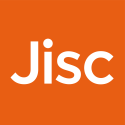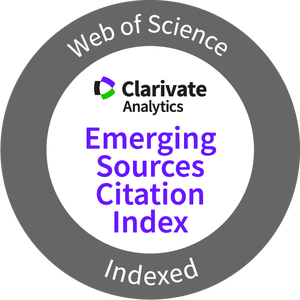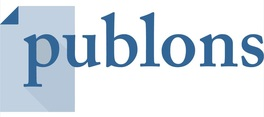Effect of high-tone external muscle stimulation on fatigue and functional outcomes in multiple sclerosis: A randomized controlled trial
Resumen
A major symptom experienced by subjects with multiple sclerosis is fatigue, which induces a decline in physical, cognitive, and functional capacity. Exercise and electrotherapy are cornerstones of rehabilitation that elicit acceptable effects on feelings of fatigue and on performing activities of daily living. A randomized controlled trial was conducted to investigate the effects of high-tone external muscle stimulation on fatigue and functional outcomes in multiple sclerosis patients. A total of 40 multiple sclerosis patients were allocated randomly to either: the study or control groups. The study group received high-tone external muscle stimulation, while the control group received a conventional selected exercise training program. Both groups received 3 sessions per week for one month. Both groups showed a significant improvement post-study compared with pre-study. There was a significant reduction in Disability Status Scale (p=0.002), Fatigue Severity Scale scores (p=0.004), and total scores of Modified Fatigue Impact Scale (p=0.001) of the study group compared with that of the control group. High-tone external muscle stimulation showed an important improvement effect for both fatigue and functional outcomes in multiple sclerosis patients, being more effective than the conventional exercise training program; therefore, it should be considered a beneficial treatment method for patients with multiple sclerosis.
Descargas
-
Resumen331
-
PDF 136
Citas
Andreasen, A. K., Stenager, E., & Dalgas, U. (2011). The effect of exercise therapy on fatigue in multiple sclerosis. Multiple Sclerosis, 17(9), 1041–1054. https://doi.org/10.1177/1352458511401120
Beckerman, H., Eijssen, I. C., van Meeteren, J., Verhulsdonck, M. C., & de Groot, V. (2020). Fatigue Profiles in Patients with Multiple Sclerosis are Based on Severity of Fatigue and not on Dimensions of Fatigue. Scientific Reports, 10(1), 1-11. https://doi.org/10.1038/s41598-020-61076-1
Conradsson, D., Ytterberg, C., Engelkes, C., Johansson, S., & Gottberg, K. (2021). Activity limitations and participation restrictions in people with multiple sclerosis: a detailed 10-year perspective. Disability and Rehabilitation, 43(3), 406–413. https://doi.org/10.1080/09638288.2019.1626919
Covey, T. J., Golan, D., Doniger, G. M., Sergott, R., Zarif, M., Bumstead, B., Buhse, M., Kaczmarek, O., Mebrahtu, S., Bergmann, C., Wilken, J., & Gudesblatt, M. (2022). Prolonged visual evoked potential latency predicts longitudinal worsening of fatigue in people with multiple sclerosis. Multiple Sclerosis and Related Disorders, 67, 1-15. https://doi.org/10.1016/j.msard.2022.104073
Darling, M. (2021). The Point in which Peak Power Occurs in Relation to the Percentage of One-Repetition Max for the Clean, Back Squat, and Bench Press Exercises across Various Athlete Types 2021 [Master’s Theses, Fort Hays State University].
Dong, H. L., Wu, H. Y., Tian, Z. X., Luo, Z., Wu, Y. F., & Zhao, J. (2020). Electrical stimulation induces mitochondrial autophagy via activating oxidative stress and Sirt3 signaling pathway. Chinese Medical Journal, 134(5), 628–630. https://doi.org/10.1097/CM9.0000000000001165
Drerup, M., Roth, A., Kane, A., & Sullivan, A. B. (2021). Therapeutic Approaches to Insomnia and Fatigue in Patients with Multiple Sclerosis. Nature and Science of Sleep, 13, 201–207. https://doi.org/10.2147/NSS.S256676
Dudek, J. (2002). Terapia energotonowa. Ogólnopolski Przegląd Medyczny, 11(2), 1-15.
Enoka, R. M., Almuklass, A. M., Alenazy, M., Alvarez, E., & Duchateau, J. (2021). Distinguishing between Fatigue and Fatigability in Multiple Sclerosis. Neurorehabilitation and Neural Repair, 35(11), 960–973. https://doi.org/10.1177/15459683211046257
Faul, F., Erdfelder, E., Buchner, A., & Lang, A. G. (2009). Statistical power analyses using G*Power 3.1: tests for correlation and regression analyses. Behavior Research Methods, 41(4), 1149–1160. https://doi.org/10.3758/BRM.41.4.1149
Heidland, A., Fazeli, G., Klassen, A., Sebekova, K., Hennemann, H., Bahner, U., & Di Iorio, B. (2013). Neuromuscular electrostimulation techniques: historical aspects and current possibilities in treatment of pain and muscle waisting. Clinical Nephrology, 79, 12–23.
Judica, E., Martinelli Boneschi, F., Ungaro, D., Comola, M., Gatti, R., Comi, G., & Rossi, P. (2011). Impact of fatigue on the efficacy of rehabilitation in multiple sclerosis. Journal of Neurology, 258(5), 835–839. https://doi.org/10.1007/s00415-010-5851-6
Karabudak, R., Dahdaleh, M., Aljumah, M., Alroughani, R., Alsharoqi, I. A., AlTahan, A. M., Bohlega, S. A., Daif, A., Deleu, D., Amous, A., Inshasi, J. S., Rieckmann, P., Sahraian, M. A., & Yamout, B. I. (2015). Functional clinical outcomes in multiple sclerosis: Current status and future prospects. Multiple Sclerosis and Related Disorders, 4(3), 192–201. https://doi.org/10.1016/j.msard.2015.03.004
Kargarfard, M., Etemadifar, M., Baker, P., Mehrabi, M., & Hayatbakhsh, R. (2012). Effect of aquatic exercise training on fatigue and health-related quality of life in patients with multiple sclerosis. Archives of Physical Medicine and Rehabilitation, 93(10), 1701–1708. https://doi.org/10.1016/j.apmr.2012.05.006
Kempf, K., Röhling, M., Darwish, E., Martin, S., Jander, S., & Herdmann, J. (2018). High-Tone External Muscle Stimulation for the Treatment of Chronic Sciatica--A Randomized Controlled Crossover Trial. The Open Pain Journal, 11, 21-30. https://doi.org/10.2174/1876386301811010021
Kubsik, A., Klimkiewicz, P., Klimkiewicz, R., Jankowska, K., Jankowska, A., & Woldańska-Okońska, M. (2014). Wpływ terapii energotonowej na stan funkcjonalny chorych na stwardnienie rozsiane Polski Merkuriusz Lekarski, 37(217), 24–29.
Leocani, L., Colombo, B., & Comi, G. (2008). Physiopathology of fatigue in multiple sclerosis. Neurological Sciences, 29, 241–243. https://doi.org/10.1007/s10072-008-0950-1
Liu, M. N., Yeh, H. L., Kuan, A. S., Tsai, S. J., Liou, Y. J., Walsh, V., & Lau, C. I. (2021). High-Frequency External Muscle Stimulation Reduces Depressive Symptoms in Older Male Veterans: A Pilot Study. Journal of Geriatric Psychiatry and Neurology, 34(1), 37–45. https://doi.org/10.1177/0891988720915524
Lopez, J. A., Denkova, M., Ramanathan, S., Dale, R. C., & Brilot, F. (2021). Pathogenesis of autoimmune demyelination: from multiple sclerosis to neuromyelitis optica spectrum disorders and myelin oligodendrocyte glycoprotein antibody-associated disease. Clinical & Translational Immunology, 10(7), 1-21. https://doi.org/10.1002/cti2.1316
Mehendale, K., & Aruin, A. S. (2013). Exercise approaches to ameliorate fatigue in people with Multiple Sclerosis. Journal of Novel Physiotherapies, 3(5), 1-10.
Miskovic, A., & Ehrlich-Jones, L. (2018). Measurement characteristics and clinical utility of the modified fatigue impact scale in individuals with multiple sclerosis. Archives of Physical Medicine and Rehabilitation, 99, 213–224.
Morris, G., & Berk, M. (2015). The many roads to mitochondrial dysfunction in neuroimmune and neuropsychiatric disorders. BMC Medicine, 13, 1-16. https://doi.org/10.1186/s12916-015-0310-y
Motl, R. W., & Sandroff, B. M. (2015). Benefits of Exercise Training in Multiple Sclerosis. Current Neurology and Neuroscience Reports, 15(9), 1-12. https://doi.org/10.1007/s11910-015-0585-6
Nagaraj, K., Taly, A. B., Gupta, A., Prasad, C., & Christopher, R. (2013). Prevalence of fatigue in patients with multiple sclerosis and its effect on the quality of life. Journal of Neurosciences in Rural Practice, 4(3), 278–282. https://doi.org/10.4103/0976-3147.118774
Oliva Ramirez, A., Keenan, A., Kalau, O., Worthington, E., Cohen, L., & Singh, S. (2021). Prevalence and burden of multiple sclerosis-related fatigue: a systematic literature review. BMC Neurology, 21(1), 1-16. https://doi.org/10.1186/s12883-021-02396-1
Ransom, S. C., Shahrestani, S., Lien, B. V., Tafreshi, A. R., Brown, N. J., Hanst, B., Lehrich, B. M., Ransom, R. C., & Sahyouni, R. (2020). Translational Approaches to Electrical Stimulation for Peripheral Nerve Regeneration. Neurorehabilitation and Neural Repair, 34(11), 979–985. https://doi.org/10.1177/1545968320962508
Saad El-Din Mahmoud, L., Aly, S. M., Shafeek, M. M., & Battesha, H. H. M. (2022). Effect of CoDuSe and step square exercises on risk of fall inmultiple sclerosis: a randomized controlled trial. Physical Activity Review, 10(2), 12-22.
Schaffler-Schaden, D., Sassmann, R., Johansson, T., Gampenrieder, S. P., Rinnerthaler, G., Lampl, K., Herfert, J., Lenzhofer, C., Landkammer, Y. T., Rieder, F., Greil, R., Flamm, M., & Niebauer, J. (2020). Comparison of high tone therapy and transcutaneous electrical nerve stimulation therapy in chemotherapy-induced polyneuropathy. Medicine, 99(19), 1-7. https://doi.org/10.1097/MD.0000000000020149
Wallace, A., Pietrusz, A., Dewar, E., Dudziec, M., Jones, K., Hennis, P., Sterr, A., Baio, G., Machado, P. M., Laurá, M., Skorupinska, I., Skorupinska, M., Butcher, K., Trenell, M., Reilly, M. M., Hanna, M. G., & Ramdharry, G. M. (2019). Community exercise is feasible for neuromuscular diseases and can improve aerobic capacity. Neurology, 92(15), 1773–1785. https://doi.org/10.1212/WNL.0000000000007265
Las obras que se publican en esta revista están sujetas a los siguientes términos:
1. El Servicio de Publicaciones de la Universidad de Murcia (la editorial) conserva los derechos patrimoniales (copyright) de las obras publicadas, y favorece y permite la reutilización de las mismas bajo la licencia de uso indicada en el punto 2.
© Servicio de Publicaciones, Universidad de Murcia, 2013
2. Las obras se publican en la edición electrónica de la revista bajo una licencia Creative Commons Reconocimiento-NoComercial-SinObraDerivada 3.0 España (texto legal). Se pueden copiar, usar, difundir, transmitir y exponer públicamente, siempre que: i) se cite la autoría y la fuente original de su publicación (revista, editorial y URL de la obra); ii) no se usen para fines comerciales; iii) se mencione la existencia y especificaciones de esta licencia de uso.
3. Condiciones de auto-archivo. Se permite y se anima a los autores a difundir electrónicamente las versiones pre-print (versión antes de ser evaluada) y/o post-print (versión evaluada y aceptada para su publicación) de sus obras antes de su publicación, ya que favorece su circulación y difusión más temprana y con ello un posible aumento en su citación y alcance entre la comunidad académica.



















